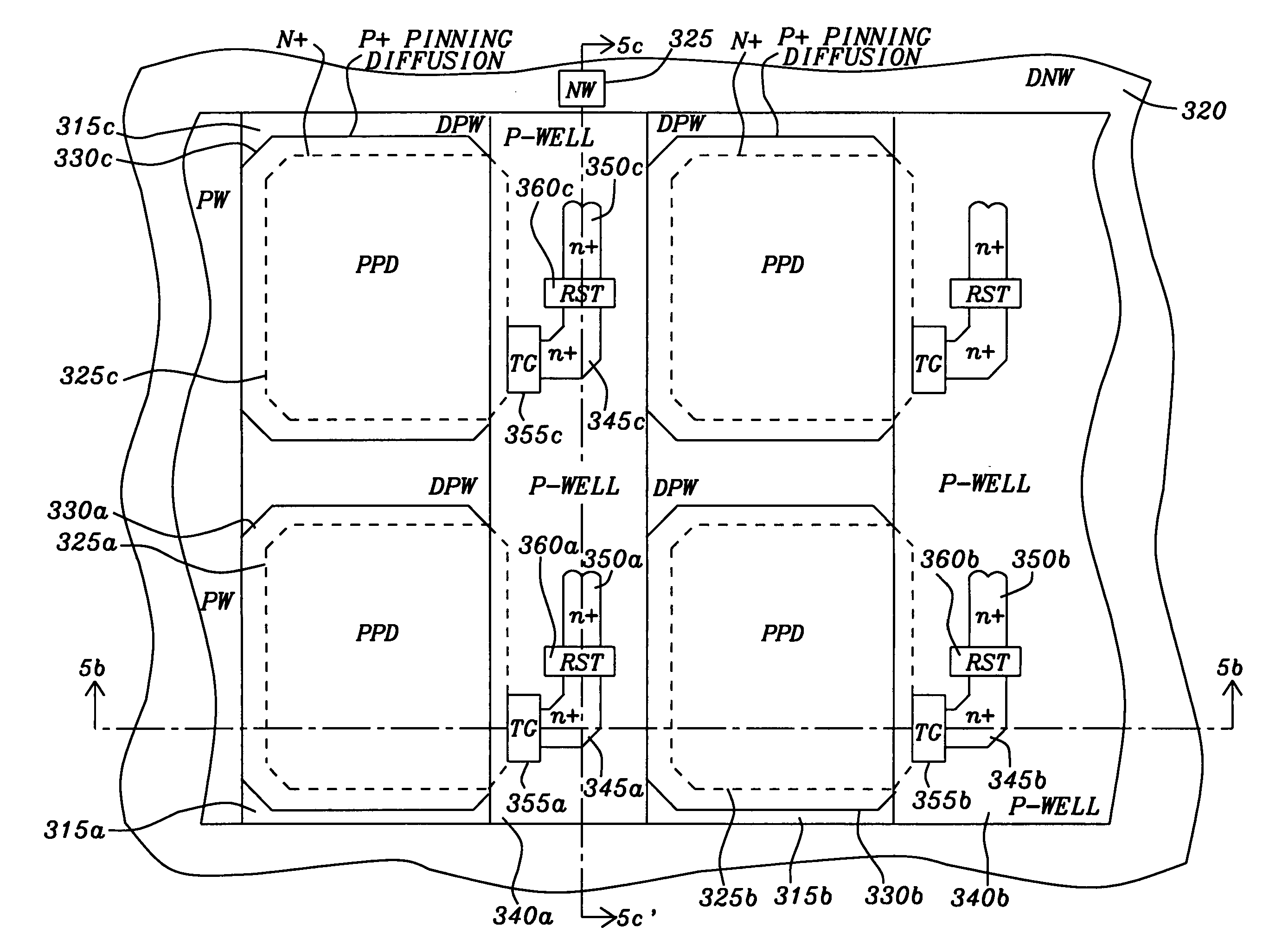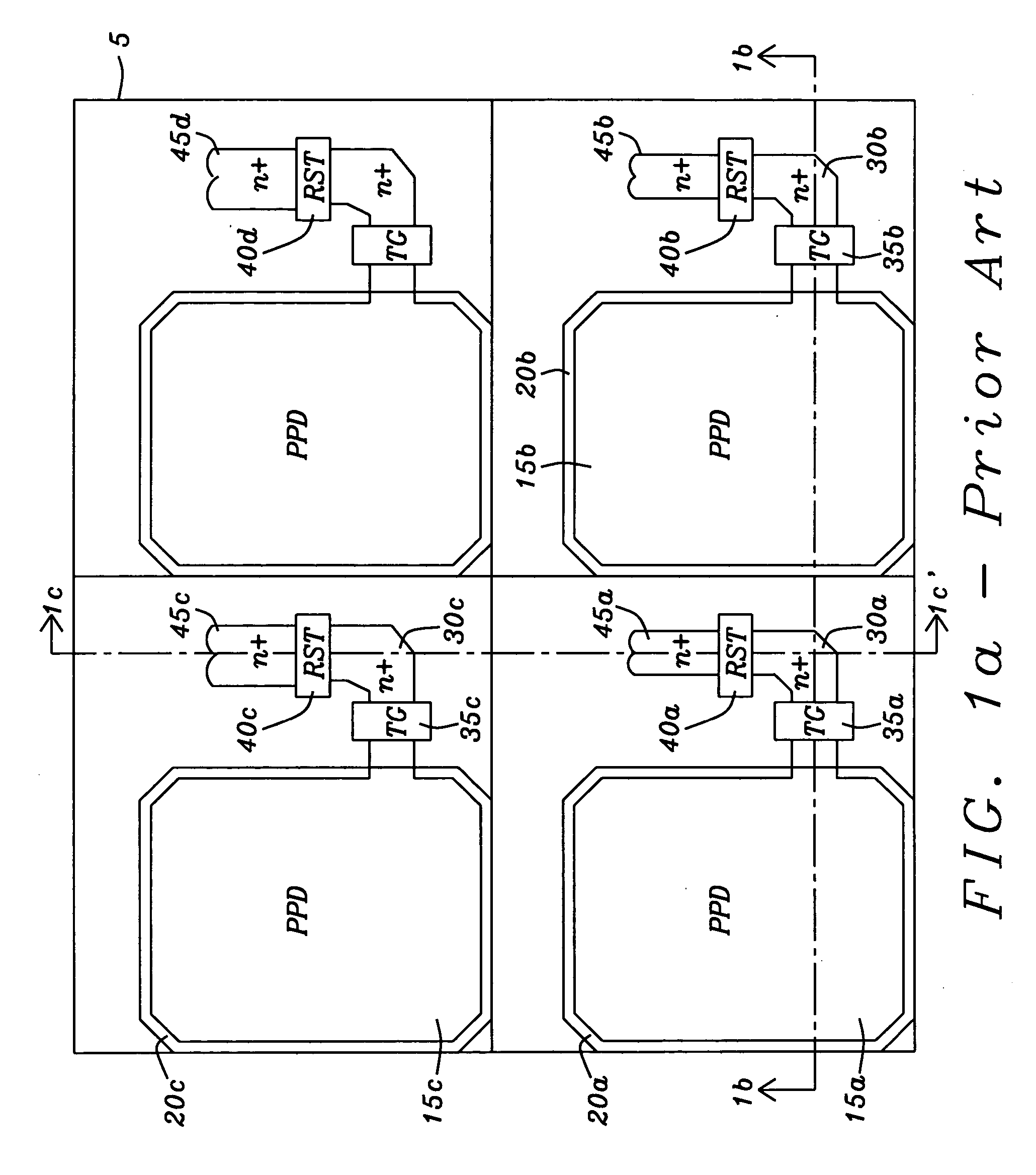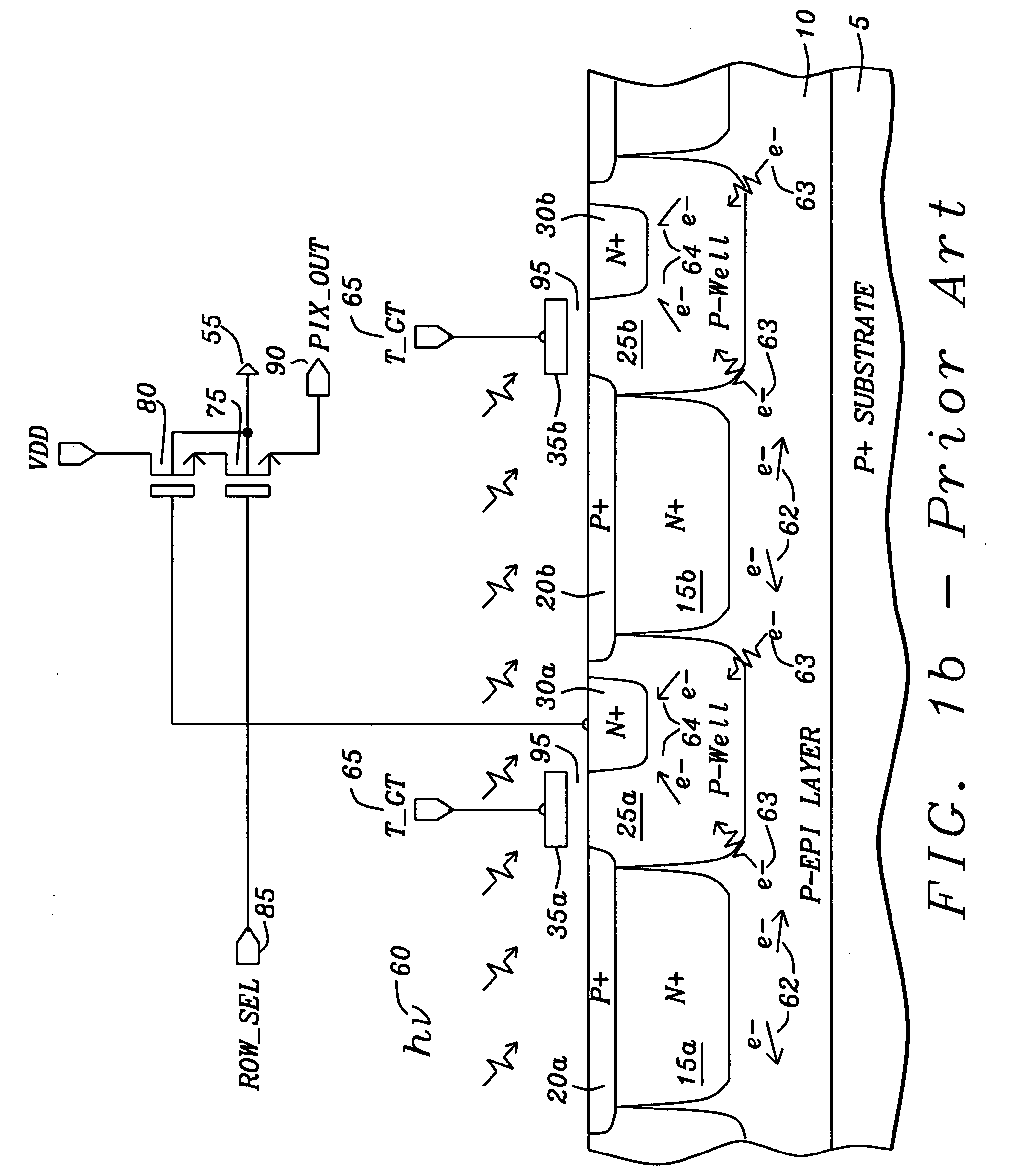Pinned photodiode (PPD) pixel with high shutter rejection ratio for snapshot operating CMOS sensor
a photodiode and shutter rejection ratio technology, applied in the field of solid-state image sensing devices, can solve the problems of complicated control of this type of read-out, motion artifacts, and distortion of images, and achieve the effects of preventing the generation of photoelectrons, preventing the leakage of substrate charge, and preventing the formation of substrate charg
- Summary
- Abstract
- Description
- Claims
- Application Information
AI Technical Summary
Benefits of technology
Problems solved by technology
Method used
Image
Examples
Embodiment Construction
[0042] Camera systems that are intended for capturing fast moving images require arrays of snapshot CMOS active pixel image sensors with an ultra high light shutter rejection ratio for detecting moving objects without motion artifacts. Light leakage to the storage node must be minimized to provide snapshot images without motion artifacts.
[0043] Refer to FIG. 2 for a discussion of an image processing application specific integrated circuit 150. The image processing application specific integrated circuit contains an image sensor 100. The image sensor 100 has an array 105 of snapshot pinned photodiode CMOS active pixel image sensors, row control circuitry 110, column sample and hold circuitry 115, a video amplifier 120, and an analog-to-digital converter 125.
[0044] The image processing application specific integrated circuit 150 has pinned photodiode active pixel image sensor array 105 with a few rows of dark pixels for auto offset correction. In the particular intended application ...
PUM
 Login to View More
Login to View More Abstract
Description
Claims
Application Information
 Login to View More
Login to View More - R&D
- Intellectual Property
- Life Sciences
- Materials
- Tech Scout
- Unparalleled Data Quality
- Higher Quality Content
- 60% Fewer Hallucinations
Browse by: Latest US Patents, China's latest patents, Technical Efficacy Thesaurus, Application Domain, Technology Topic, Popular Technical Reports.
© 2025 PatSnap. All rights reserved.Legal|Privacy policy|Modern Slavery Act Transparency Statement|Sitemap|About US| Contact US: help@patsnap.com



